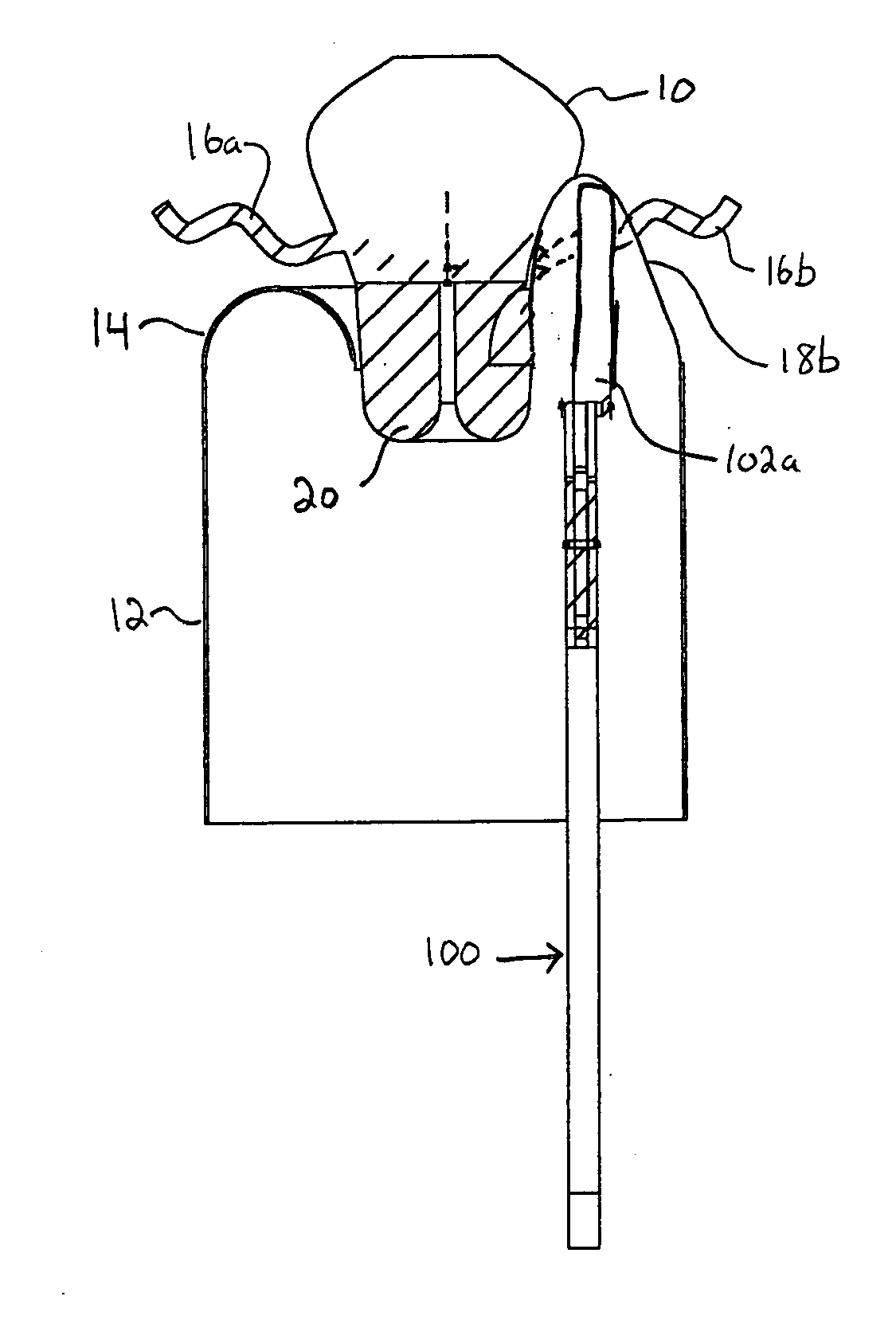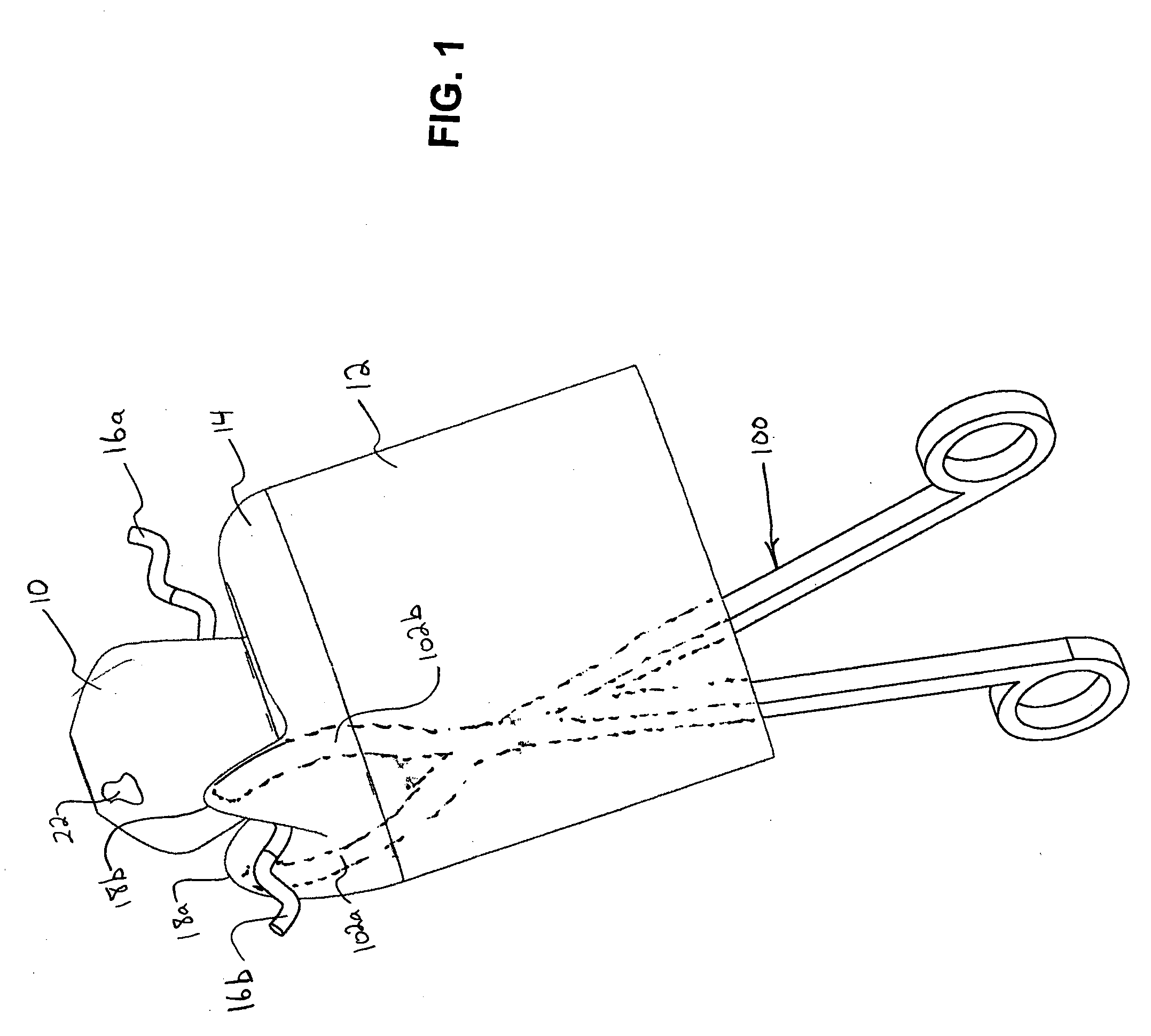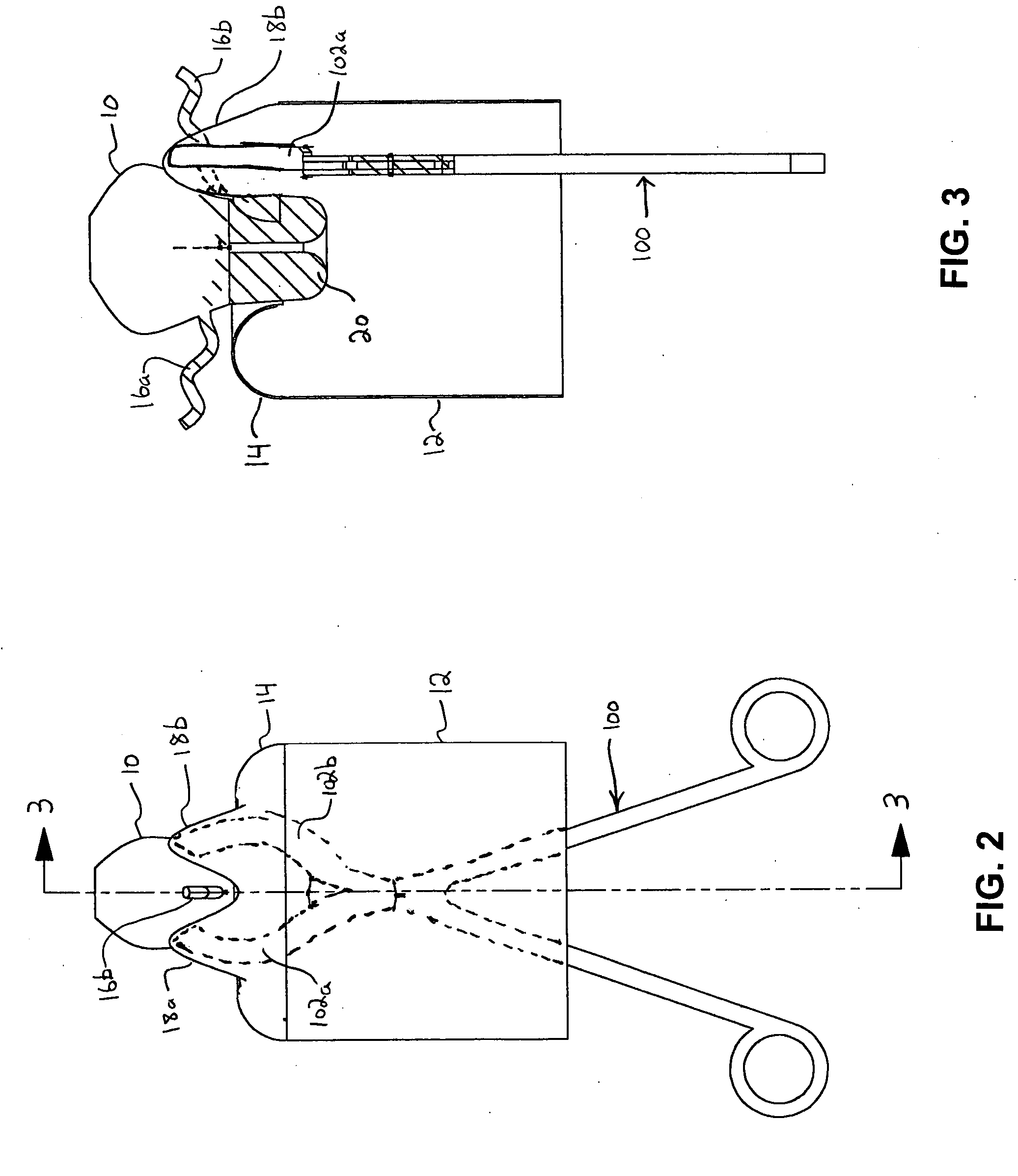Methods for minimally-invasive, non-permanent occlusion of a uterine artery
a uterine artery and non-permanent occlusion technology, applied in the field of disorders, can solve the problems of 0.5 death rate, difficult to know which fibroid is causing symptoms for the patient, and uterine fibroid disorders
- Summary
- Abstract
- Description
- Claims
- Application Information
AI Technical Summary
Benefits of technology
Problems solved by technology
Method used
Image
Examples
Embodiment Construction
[0040] Non-permanent occlusion of the uterine artery is sufficient to cause the demise of uterine myomata without unnecessarily exposing other tissues and anatomical structures to hypoxia attendant to prior permanent occlusion techniques. Burbank, Fred, et al., Uterine Artery Occlusion by Embolization or Surgery for the Treatment of Fibroids: A Unifying Hypothesis-Transient Uterine Ischemia, The Journal of the American Association of Gynecologic Laparoscopists, November 2000, Vol. 7, No. 4 Supplement, pp. S3-S49. While occlusion of a uterine artery can be achieved using procedures which penetrate tissue of the patient, the inventors herein have discovered that occlusion of one or both of the uterine arteries of a patient can be achieved non-invasively, that is, without penetrating tissue of the patient.
[0041] In the context of the present invention, a therapeutically effective transient time of occlusion of a uterine artery to treat uterine fibroid tumors is from 1 hour to 1 day (2...
PUM
 Login to View More
Login to View More Abstract
Description
Claims
Application Information
 Login to View More
Login to View More - R&D
- Intellectual Property
- Life Sciences
- Materials
- Tech Scout
- Unparalleled Data Quality
- Higher Quality Content
- 60% Fewer Hallucinations
Browse by: Latest US Patents, China's latest patents, Technical Efficacy Thesaurus, Application Domain, Technology Topic, Popular Technical Reports.
© 2025 PatSnap. All rights reserved.Legal|Privacy policy|Modern Slavery Act Transparency Statement|Sitemap|About US| Contact US: help@patsnap.com



